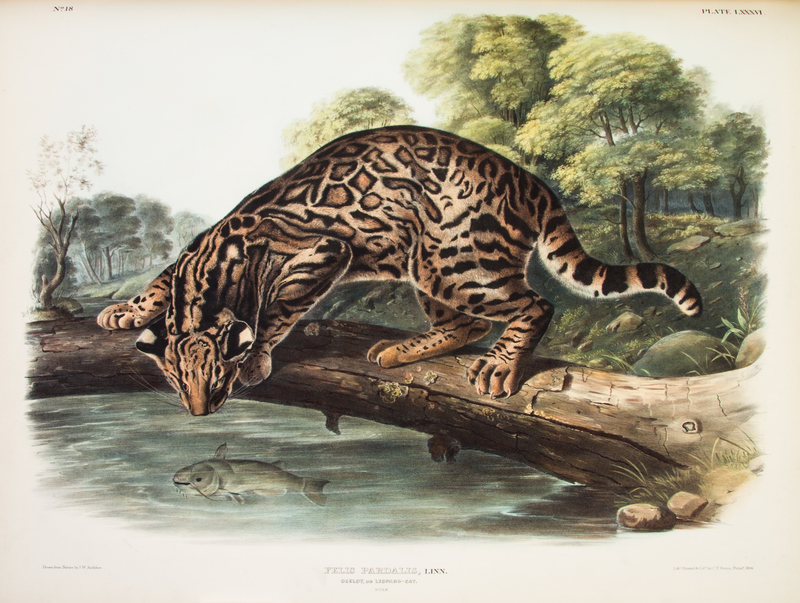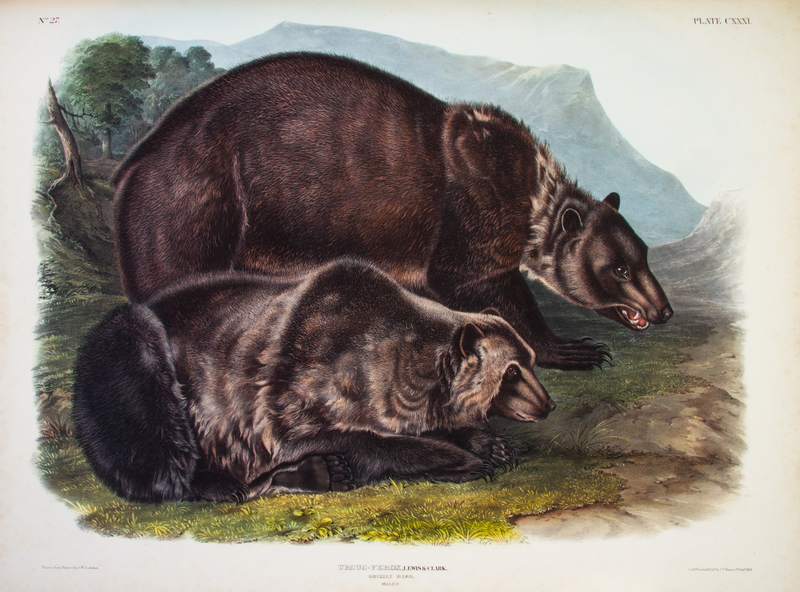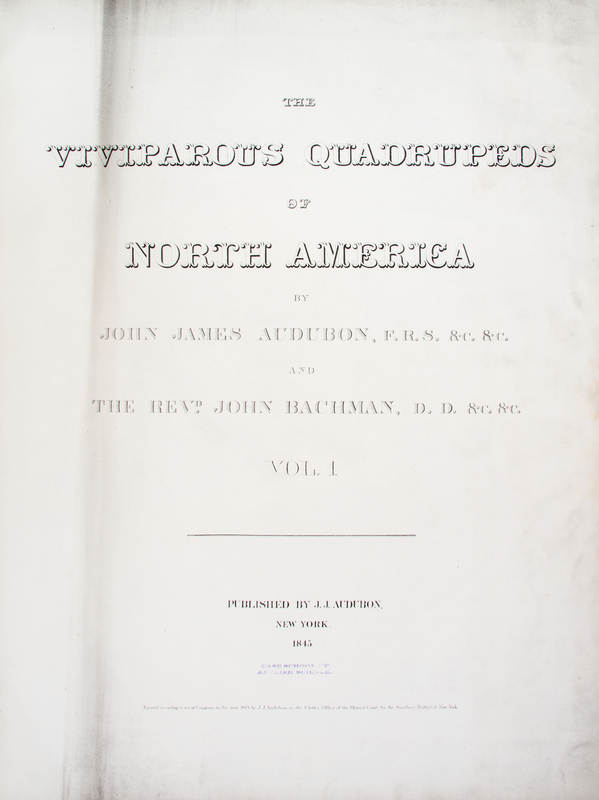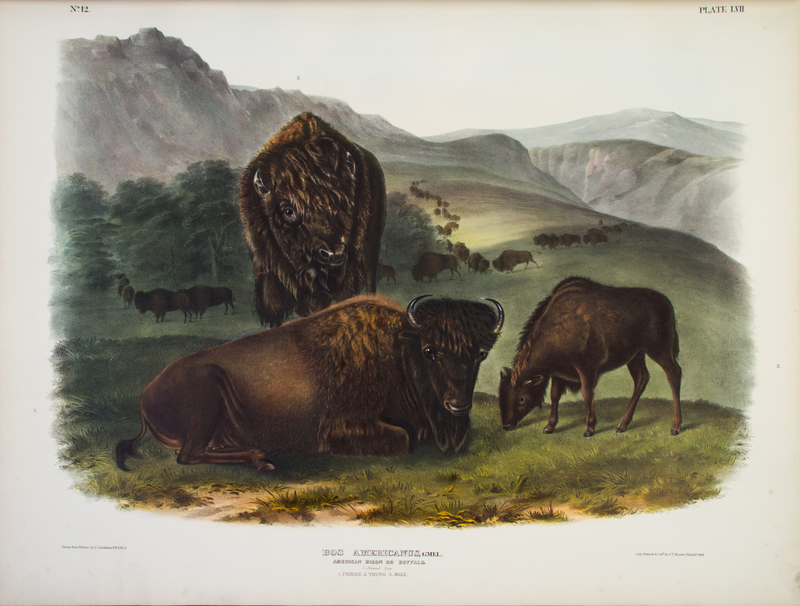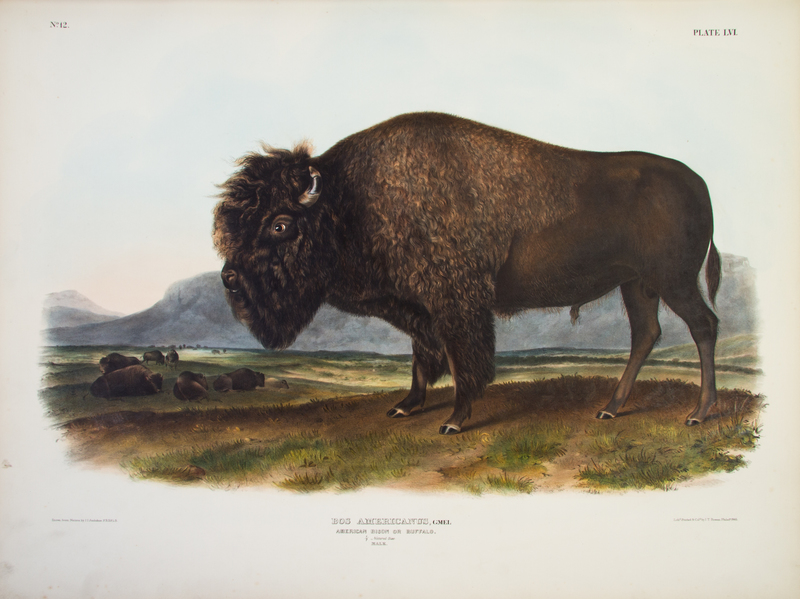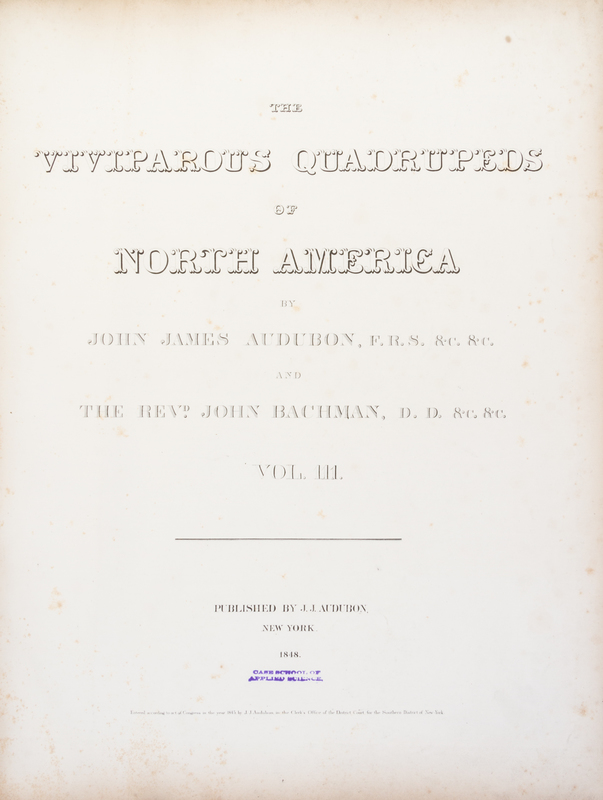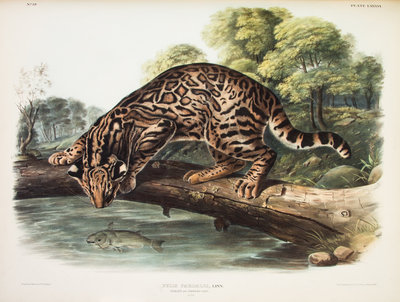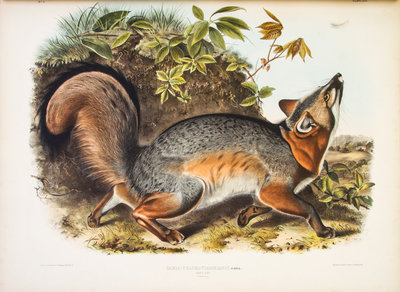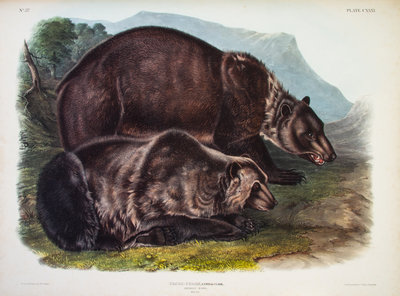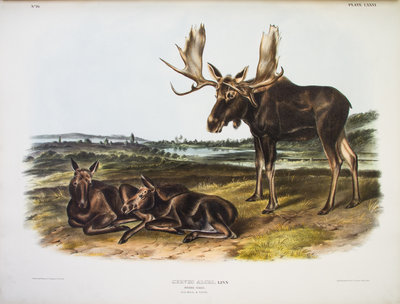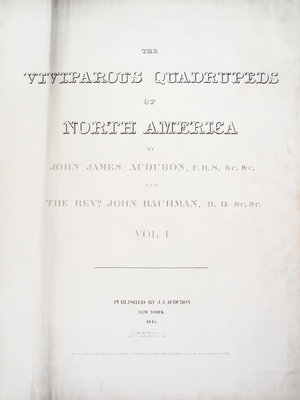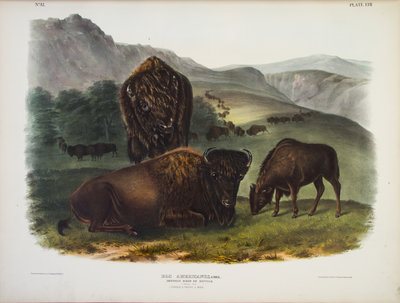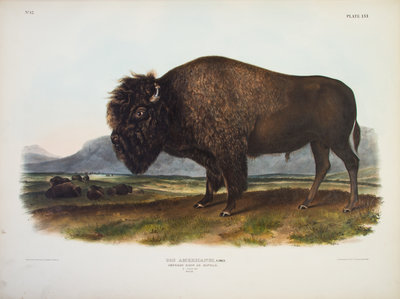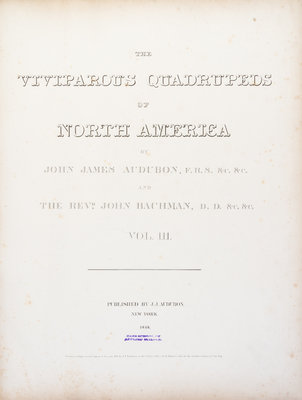Condition Report
Contact Information
Lot 38
AUDUBON, JOHN JAMES, AND JOHN BACHMAN
Sale 322 - Fine Books and Manuscripts
Aug 6, 2014
10:00AM CT
Live / Chicago
Own a similar item?
Estimate
$200,000 -
300,000
Price Realized
$300,000
Sold prices are inclusive of Buyer’s Premium
Lot Description
AUDUBON, JOHN JAMES, AND JOHN BACHMAN
The Viviparous Quadrupeds of North America. New York: J.J. Audubon, 1845-1848.3 vols. Elephant folios, contemporary 3/4 black morocco over cloth, gilt-lettered spines.The present, rare, three-volume edition, with all of its title pages, is in very good condition, unrestored, with brilliant coloring. First edition of "the largest successful color plate book project of 19th-century America," (Reese) complete, with 150 hand-colored lithographed plates by J.J. Audubon and J.W. Audubon, backgrounds by Victor Audubon, lithography by J.T. Bowen, three lithographed title pages, and leaves of contents. Early issue, bound in three volumes. The later editions were bound in two volumes, with inferior coloring, and without the title-page for volume three.The Viviparous Quadrupeds of North America, following the success of, and funded with the profits by, Audubon's The Birds of America, was meant to match the magnificence of Audubon's magnum ornithological opus; it stands apart as having been entirely produced in the United States, with over 300 original subscribers. As his last great achievement, The Quadrupeds firmly established Audubon as one of history's greatest natural history artists. John James Audubon was able to complete seventy-seven drawings before his failing health kept him from work. The remaining drawings were executed by his sons, John Woodhouse and Victor. John Bachman, Audubon's collaborator and the father-in-law of John Wodehouse and Victor, insisted that all of the profits go to the Audubon family. The work originally appeared in thirty numbers with five plates each, with each number costing ten dollars. The project was incredibly commercially successful, due in large part to the management of Victor Audubon. Plate 150 (Jaguar) with crease crossing image and 9-inch separation at fold, leaving impression on plate 151; plate 1 (Wild Cat) with 1-inch tear on bottom edge; one plate with pencilled manuscript notation; some soiling at edges; a number of plates with minor finger soiling; minor intermittent foxing; f.f.e.p. vols. 1 and 2 creased; "Case School of Applied Sciences" stamp to title page each vol.; otherwise plates are very clean with exceptionally bright coloring and free from repairs. Provenance: The present set was owned by one of the last members of the Ark Club (Cleveland, OH), which was founded by William Case and Leonard Case. In 1835, Leonard Case turned over the use of his home to the "Arkites," for their collection of bird and mammal specimens. He willed that the property and its contents be sold to establish the Case School of Applied Sciences, with the exception of two rooms, for which he established a life-long lease for 15 members, including the original owner of the present set, until the last had passed. The space was used as Case Library until it was torn down by the city to make room for the Cleveland Post Office, at which time the three remaining members were awarded damages. Owned by one of the last surviving members of this group of 15, the present set, while housed in the Case Library before its demolition, has been bequeathed through family for over a century and has thus remained in private hands.
